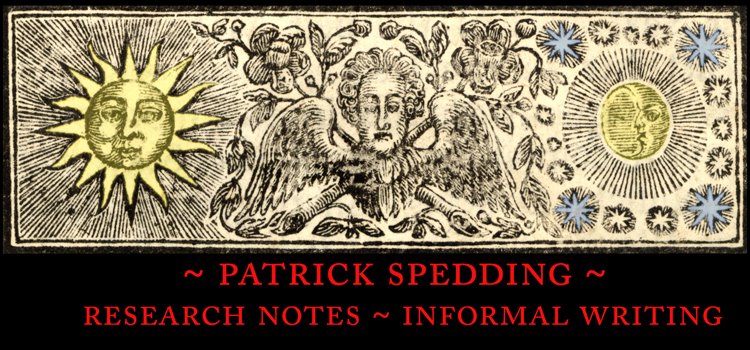The myth of a vast Vatican collection of erotica or pornography was established sixty years ago, by Ralph Ginzburg.
In his
Unhurried View of Erotica (1958), after one hundred pages of broad-brush history, Ginzburg turns to the question of “the whereabouts of the world’s … great collections of erotica”—public and private—which he ranks, according to the size of the collection.
At the top of Ginzburg’s list is the Vatican library, with “25,000 volumes and some 100,000 prints” of erotica, a collection of “hush-hush volumes” significantly larger than that in the Private Case of the British Museum Library (which he estimates to be 20,000 volumes—it is actually more like 2000), and the Enfer of the Bibliothèque Nationale (2,500 volumes).
It is unclear how Ginzburg arrived at this crazy estimate, but most of his figures are inflated. Rather than “25,000 volumes,” the Vatican actually held only fifty-one items in 1936. This figure is the exact number of items recorded by Alfred Rose, compiler of the
Registrum Librorum Eroticorum (1936), during his personal investigation of the Vatican’s collection in August 1934.
To put this pip-squeak collection into context, Rose lists over five thousand titles in the
Register of Erotic Books. None of the items in the Vatican collection are particularly important—and almost all of them are in Latin, held in a collection of books on the culture of classical antiquity. The
only book in English is Hodder Westropp and C. Wake’s
Ancient Symbol Worship. Influence of the Phallic idea in the Religions of Antiquity, 2nd ed. (1875). Not exactly a classic of erotic literature.
No writer before Ginzburg appears to have claimed that the Vatican has such a large collection of erotic books, and so I it seems likely that Ginzburg is, in fact, responsible for the myth that the world’s “foremost collection of erotica is in The Vatican Library.”
Prior to Ginzburg, the only scholar to discuss the Vatican collection, commented that the “Enfer” at the Bibliothèque Nationale may have been modelled on a “similar institution [at] the Vatican Library” (Alec Craig,
Above all Liberties (1942), 145). The comparison is a little misleading since the Vatican’s collection is limited to blasphemous or heterodox works, whereas those in the Bibliothèque Nationale’s “Enfer” are often indecent, obscene, or pornographic.
After Ginzburg, however, the absurd conspiracy theory, that the Vatican has a “vast,” “comprehensive,” or even “complete” collection of pornography has been endlessly repeated—and endlessly debunked. There are many examples of the ignorant repetition of this myth, which indicate the continuing influence of Ginzburg.
In the 1990s, Julie Peakman revealed the basic misunderstanding that supports Ginzburg’s claim, by conflating the
Index Librorum Prohibitorum—the bibliography (published by the Vatican) of books that Catholics were prohibited from owning or reading—with the collection that the Vatican itself held.
(This is like assuming that, just because I compile a bibliography of every work by Eliza Haywood, that I own copies of all of these works. If only that were true! Excuse me while I make a list of the world’s largest diamonds!)
Anyway, Peakman states: “The Vatican’s
Index Librorum Prohibitorum, allegedly with the largest collection of books (around 25,000 volumes and 100,000 prints) is ‘forbidden’ to Catholics, and not open to the general public” (Peakman,
Mighty Lewd Books (2003), 195).
In the early 2000s, David Isaacson elaborated on this misunderstanding when he cautioned that “only libraries with a special purpose like the Vatican Library’s famous collection of prohibited books, or the Kinsey Institute for Sex Research Library at Indiana University, have the need for comprehensive collections of pornography” (Isaacson, in
Selecting Materials for Library Collections (2004), 6).”
My favourite example of this mad conspiracy theory comes from a “Distinguished Professor of Latin American and Latino Culture” at Amherst College—seemingly, one of the top Liberal Arts colleges in America—in a 2005 essay on censorship. In a lovely example of alliterative, hyperbolic over-reach, of grandiloquent ignorance, Prof. Ilan Stavans, refers (
here),
without irony, to the Vatican’s “
very vast holdings on erotica, blasphemy, and freemasonry, among other risqué topics.” Nice.
As I pointed out in my Foxcroft lecture, recently published (and from which the above is an excerpt of sorts), the edition of Westropp and Wake’s
Ancient Symbol Worship—held by the Vatican—is also held by the State Library of Victoria. There are also three copies of the first edition of this book in libraries throughout Australia, and there are over twenty more copies available on ABE.
What this means is that, for as little as USD14.50, you can have a Private Case collection that
equals the Vatican’s “
very vast holdings on erotica” in English.
* * * * *
Readers will find a link to a YouTube video of my 2016 Foxcroft lecture
here. To buy a copy of the (short) book that I based on this lecture, published by the Ancora Press in 2018 in an edition of one hundred copies, contact
Kay Craddock - Antiquarian Bookseller.





































